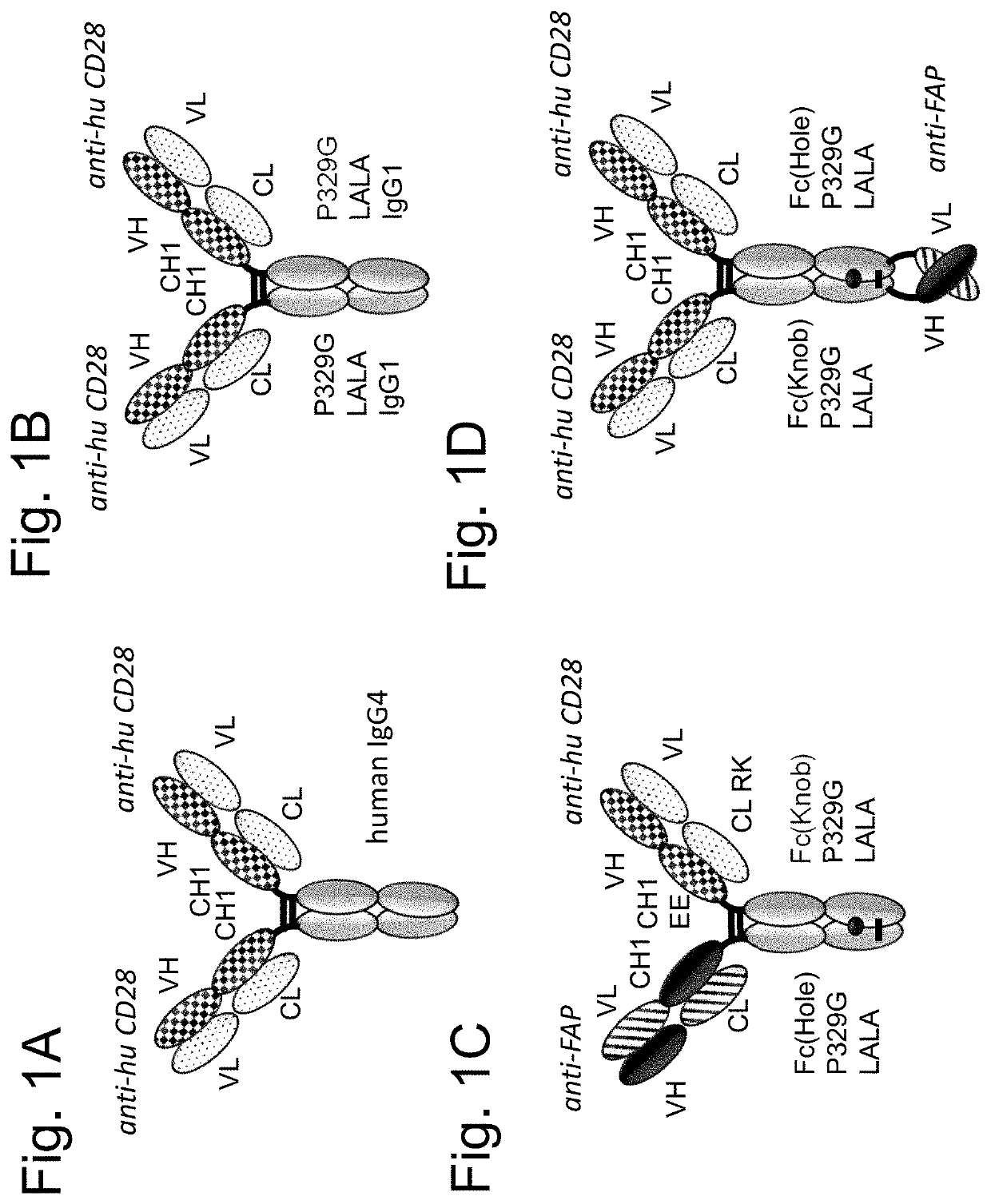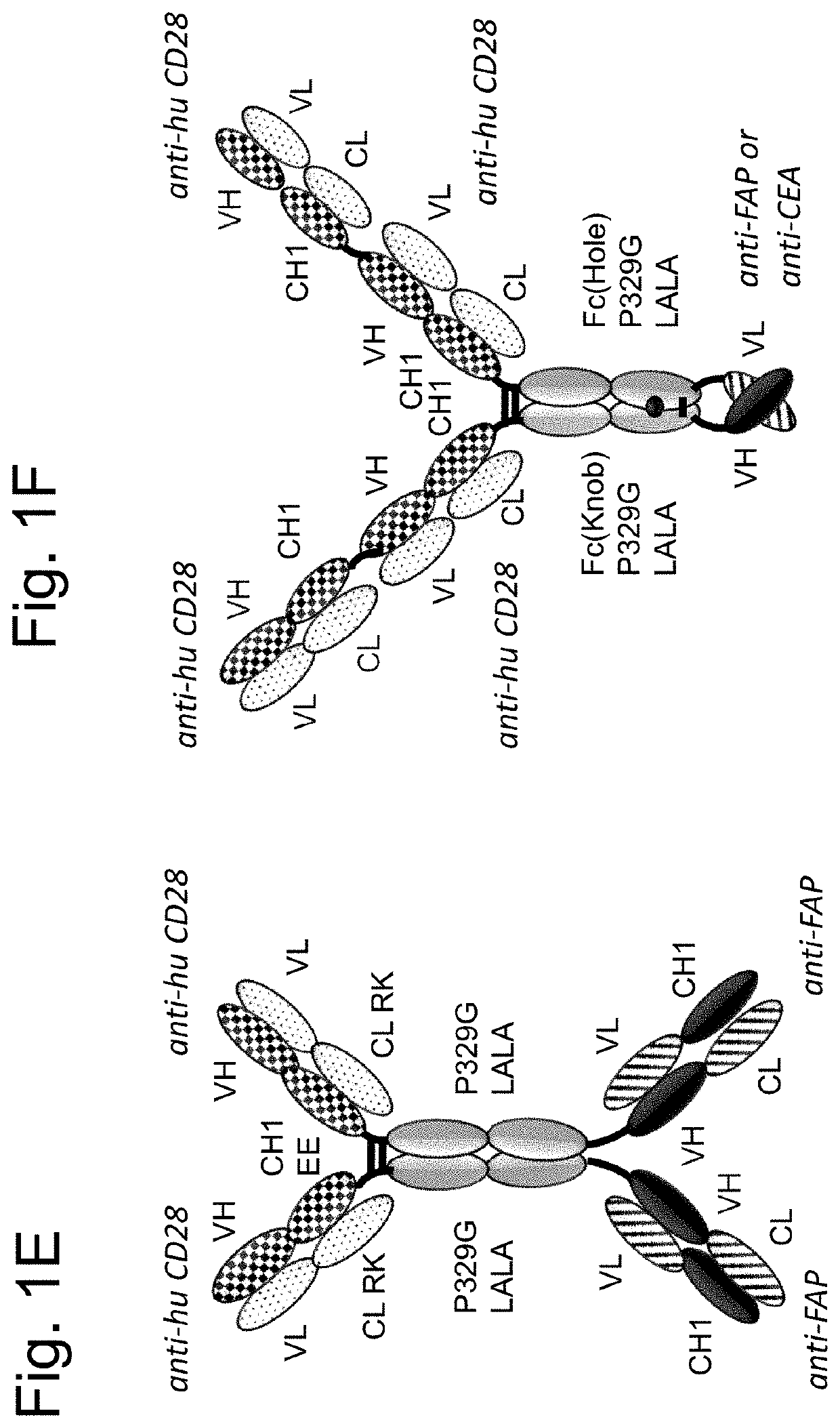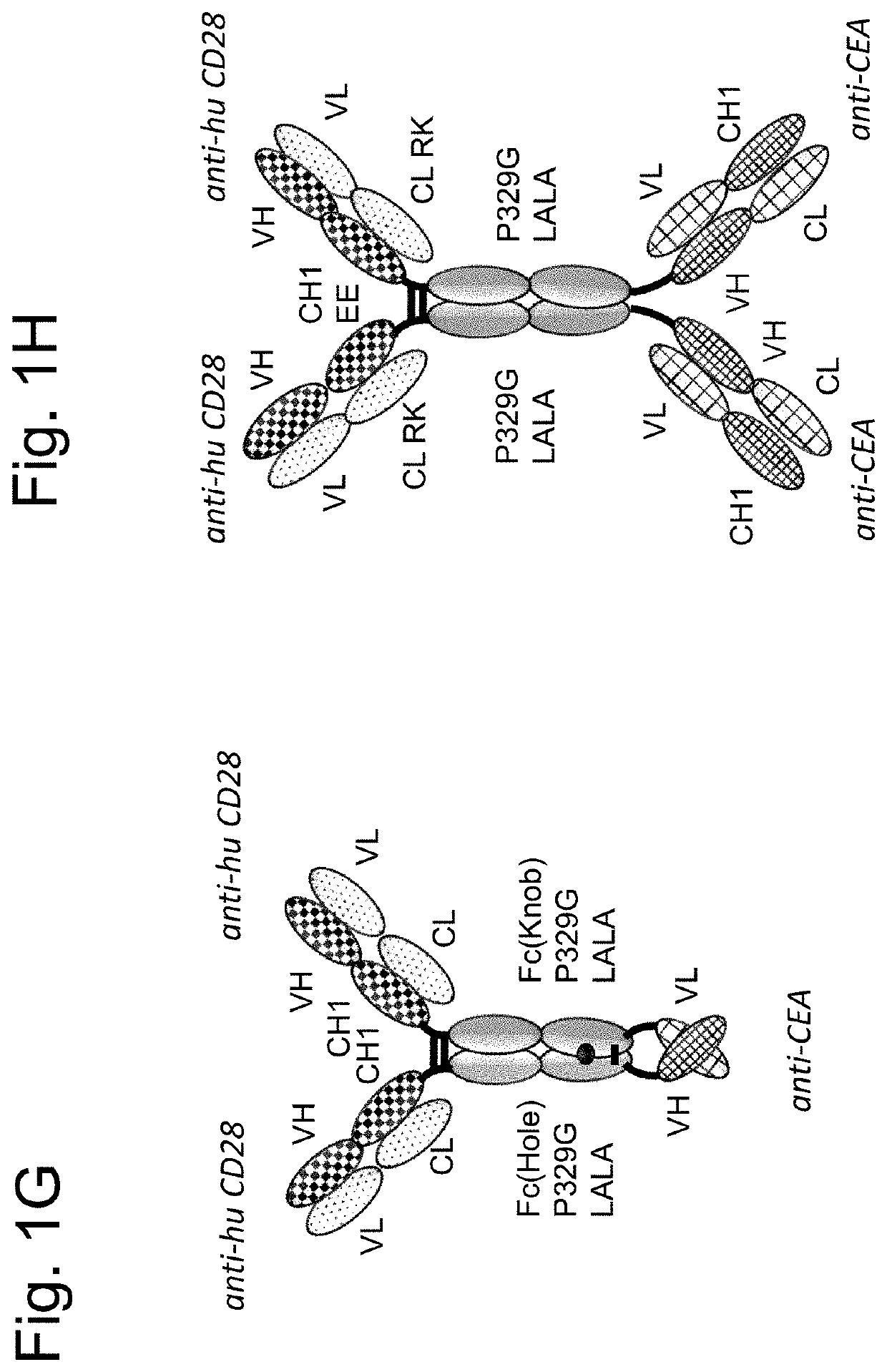Tumor-targeted superagonistic cd28 antigen binding molecules
a super-agonist and antigen technology, applied in the direction of peptides, drug compositions, peptides, etc., can solve the problems of life-threatening cytokine storm, poor response of some patients, absence or poor response of others, etc., and achieve high response rates and durability, anti-tumor potential, and exceptionally promising results
- Summary
- Abstract
- Description
- Claims
- Application Information
AI Technical Summary
Benefits of technology
Problems solved by technology
Method used
Image
Examples
example 1
Generation and Production of Bispecific or Trispecific Antibodies Targeting CD28 and Fibroblast Activation Protein (FAP) or Carcinoembryonic Antigen (CEA)
[0383]1.1 Cloning of Bispecific or Trispecific Antibodies Targeting CD28 and Fibroblast Activation Protein (FAP) or Carcinoembryonic Antigen (CEA)
[0385]A DNA fragment encoding the extracellular domain (amino acids 1 to 134 of matured protein) of human CD28 (Uniprot: P10747) was inserted in frame into two different mammalian recipient vectors upstream of a fragment encoding a hum IgG1 Fc fragment which serves as solubility- and purification tag. One of the expression vectors contained the “hole” mutations in the Fc region, the other one the “knob” mutations as well as a C-terminal avi tag (GLNDIFEAQKIEWHE, SEQ ID NO:162) allowing specific biotinylation during co-expression with Bir A biotin ligase. In addition, both Fc fragments contained the PG-LALA mutations. Both vectors were co-transfected in combina...
example 2
Binding and Kinetic Analysis of Bispecific Antibodies of Bispecific or Trispecific Antibodies Targeting CD28 and Fibroblast Activation Protein (FAP) or Carcinoembryonic Antigen (CEA)
[0422]2.1 Binding of Bispecific Antibodies Targeting CD28 and Fibroblast Activation Protein (FAP) to FAP- and CD28-Expressing Cells
[0423]The binding of bispecific FAP-CD28 molecules was tested using human fibroblast activating protein (huFAP) expressing 3T3-huFAP cells (clone 19). This cell line was generated by the transfection of the mouse embryonic fibroblast NIH / 3T3 cell line (ATCC CRL-1658) with the expression vector pETR4921 to express huFAP under 1.5 μg / mL Puromycin selection. The binding to human CD28 was tested with CHO cells expressing human CD28 (parental cell line CHO-k1 ATCC # CCL-61, modified to stably overexpress human CD28).
[0424]To assess binding, cells were harvested, counted, checked for viability and re-suspended at 2.5E5 / ml in FACS buffer (eBioscience, Cat No 00-4222-26). 5×104 cells...
example 3
Generation and Characterization of CD28 (SA) Variants Devoid of Hotspots and Reduced in Affinity
[0430]3.1 Removal of an Unpaired Cysteine Residue, Tryptophan Residues, a Deamidation Site and Generation of Affinity-Reduced CD28 (SA) Variants
[0431]As part of our detailed binder characterization, a computational analysis of the CD28(SA) variable domain sequences was performed. This analysis revealed an unpaired cysteine in the CDR2 region of VH (position 50, Kabat numbering), tryptophan residues in CDR3 of VH (position 100a, Kabat numbering) and CDR1 of VL (position 32, Kabat numbering), and a potential asparagine deamidation site in CDR2 of VH (position 56, Kabat numbering). While oxidation of tryptophan is a rather slow process and can be prevented by adding reducing compounds, the presence of unpaired cysteines in an antibody variable domain can be critical. Free cysteines are reactive and can form stable bonds with other unpaired cysteines of other proteins or components of the cel...
PUM
| Property | Measurement | Unit |
|---|---|---|
| Fraction | aaaaa | aaaaa |
| Fraction | aaaaa | aaaaa |
| Fraction | aaaaa | aaaaa |
Abstract
Description
Claims
Application Information
 Login to View More
Login to View More - R&D
- Intellectual Property
- Life Sciences
- Materials
- Tech Scout
- Unparalleled Data Quality
- Higher Quality Content
- 60% Fewer Hallucinations
Browse by: Latest US Patents, China's latest patents, Technical Efficacy Thesaurus, Application Domain, Technology Topic, Popular Technical Reports.
© 2025 PatSnap. All rights reserved.Legal|Privacy policy|Modern Slavery Act Transparency Statement|Sitemap|About US| Contact US: help@patsnap.com



